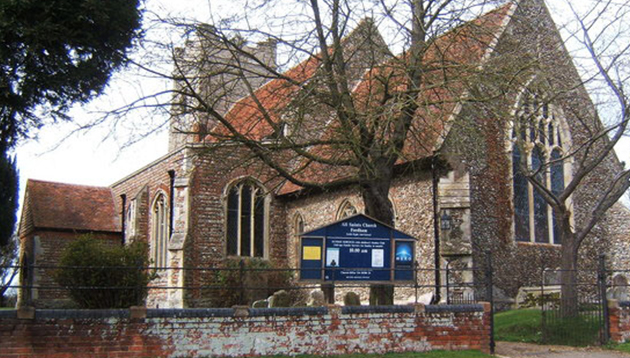08 April 2015
Easter in Fordham
By Dr Philip Church
I am at present travelling with my wife to a conference at the University of Durham, and it is Easter. For a few days I have had on my mind the title of a small book written by former Laidlaw (BCNZ) NT Lecturer, Murray J. Harris (Paternoster, 1985), Easter in Durham. It was Murray’s response to sceptical comments on the resurrection made by a former Bishop of Durham, David Jenkins. Of course a more recent Bishop of Durham, one N. T. Wright has now written what might be the definitive book on the resurrection, The Resurrection of the Son of God (Fortress, 2003, 817 pages!).
But we have not yet made it to Durham, for us it was Easter in Fordham, a small village in Essex. We are staying in Wivenhoe, near Colchester, and our hosts attend the historic All Saints Church in Fordham, that began in the year 1204. It was a special blessing to discover that the minister of All Saints from 1643 to 1645 was the great puritan theologian, John Owen. Fordham was Owen’s first pastorate, and the small typed (on a typewriter no less) note on the wall described him as perhaps “Britain’s greatest theologian,” something that Owen specialist, J. I. Packer, would agree with. After leaving Fordham, Owen went to St Peter’s Coggeshall, where he became convinced of the validity of Congregational church government. He remodelled the life of that Church on Congregational principles (it was formerly organised on Presbyterian principles). Perhaps in a later century he might even have been a Baptist!
The text for Easter Day 2015 in Fordham was the story of Thomas, John 20:24-29. The story ends, you will recall, with Jesus’s blessing on those who believe, even though they have not seen the risen Christ with their eyes as had the first disciples. That is us. I wonder if Owen preached on the same text on Easter Day in 1643, 1644 or 1645.
Since it is an Anglican Church we recited the Nicene Creed as part of the service. The line that caught my eye, and set my emotions alive was “and of his kingdom there shall be no end.” This line of the creed is an allusion to Dan 7:14, referring to the one like a human being (a son of man) who came to the Ancient of Days:

As Tom Wright notes, this text is part of the “larger picture of Easter” (Resurrection of the Son of God, 335), along with such texts as Pss 8, 110. The message of Easter is not so much that Christ rose from the dead at a point in time (which of course is true), but that Christ can still be described as “the Risen Christ.” He is the one who “ascended into heaven and is seated at the right hand of the father.” Jesus now reigns at the right hand of God, waiting for all his enemies to be placed under his feet (Heb 10:12-23, quoting Ps 110). The resurrection of the Son of God signals that the eschaton has come into the present, that the Son of Man has come to the Ancient of Days, that the last days have begun and that the kingdom of God has truly come. His resurrection, to borrow a Pauline metaphor referring to the coming of the Spirit, is the down payment, the first installment, the pledge, that one day his reign will be consummated and that of his reign there will be no end.
